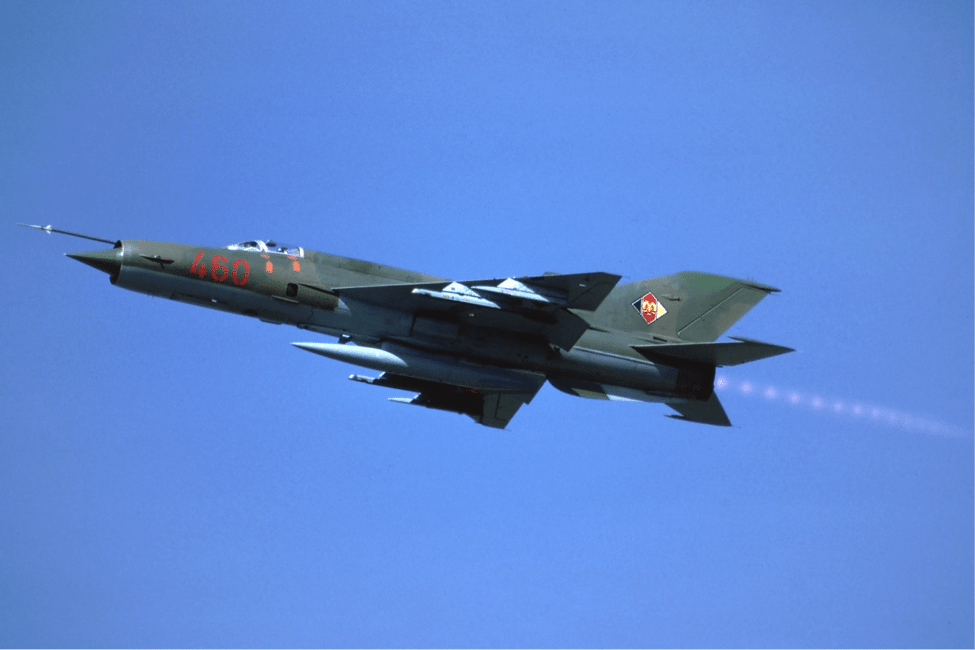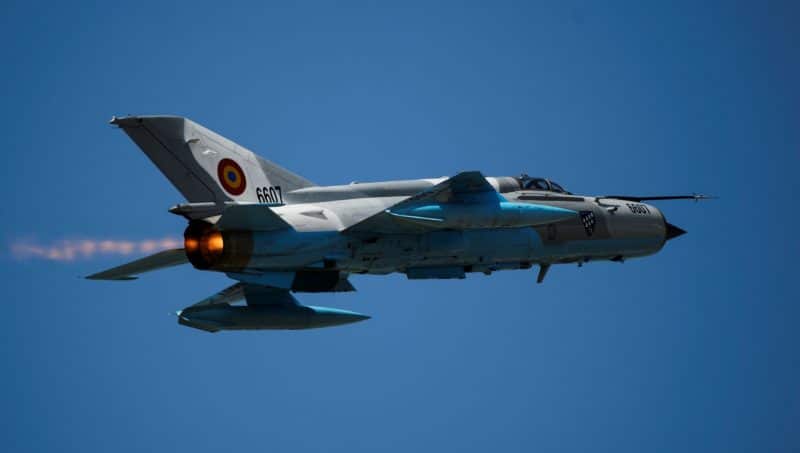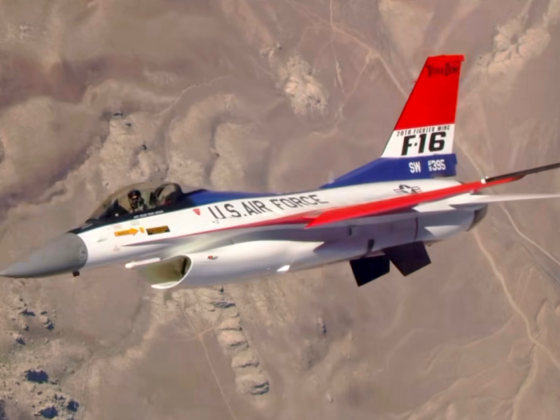This Fighter Jet Was One of the USSR’s Most Famous Exports.
On February 14th 1955 the first of more than 11,000 Mikoyan-Gurevich MiG-21s made its maiden flight. Approximately 60 countries have flown the MiG-21, and even after more than 60 years more than 3,000 of the supersonic fighters are still in service with more than 40 countries. The MiG-21 is the most-produced supersonic jet aircraft in aviation history and the most-produced combat aircraft since the Korean War, and at one point it was in production for longer than any combat aircraft.
Mikoyan-Gurevich Developed In-House
The MiG-21 “Fishbed” jet fighter was a continuation of Soviet jet fighter designs, starting with the subsonic MiG-15 and MiG-17, and the supersonic MiG-19. Development of what would become the MiG-21 began in the early 1950s, when the Mikoyan-Gurevich Design Bureau finished a preliminary design study for a prototype supersonic interceptor.

The Original Iron-Curtain Lightweight Fighter
The MiG-21 was the first Soviet aircraft to combine both fighter and interceptor characteristics in a single airframe. It was a lightweight fighter somewhat comparable at the time of its introduction to the American Lockheed F-104 Starfighter and Northrop F-5 Freedom Fighter and the French Dassault Mirage III.

Short Legs
The MiG-21’s short range was typical of the interceptor mission. Low fuel capacity and resultant short endurance of the MiG-21F, MiG-21PF, MiG-21PFM, MiG-21S, MiG-21SM, MiG-21M, and MiG-21MF variants was incrementally improved, but the MiG-21MT and MiG-21SMT variants had increased range of 250 kilometers (155 miles). However, the increase in fuel capacity and endurance inevitably resulted in decreased performance.

Never Really Meant to Be a Dogfighter
The MiG-21 has never been considered a dogfighter. The airplane’s delta wing, which while a good design for a fast-climbing interceptor, was not a good design for any kind of turning or maneuvering in air combat due to “speed bleed.” However, the light weight of the aircraft meant it could climb at prodigious rates. The design’s G-limits were increased from +7Gs in the early variants to +8.5Gs in the later variants. The Soviet Union eventually developed the MiG-29 to replace the MiG-21 and other second-generation fighters to counter the newer American F-14, F-15, F-16, and F/A-18 and other third generation NATO fighter designs.

Never Exactly a High-Tech Warrior
The MiG-21’s simple controls, engine, weapons, and avionics were typical of Soviet-era military aircraft designs. The use of a tail with the delta wing aids stability and control at the extremes of the flight envelope, enhancing safety for lower-skilled pilots. These characteristics enhanced its marketability as an export aircraft to developing countries with limited training programs and available pilots. While technologically inferior to the more advanced fighters it often faced, low production and maintenance costs made it a favorite of nations buying Eastern Bloc military hardware. Russian, Israeli and Romanian companies now offer upgrade packages to MiG-21 operators, designed to bring the aircraft up to a modern standard, with greatly upgraded avionics and armaments.

Building a Bunch of MiGs
A total of 10,645 MiG-21 aircraft were built in the USSR. The aircraft were produced in three factories. The first, referred to as AZ30 in Moscow, produced 3,203 MiG-21s. The second factory, GAZ 21 in Gorky, produced 5,765 MiG-21s. The third factory, TAZ 31 in Tbilisi, produced 1,678 aircraft. 194 more MiG-21s were built under license in Czechoslovakia. Hindustan Aeronautics of India built 657 MiG-21s as well. China has built well over 2,400 copies of the MiG-21 designated F-7.

More North Vietnamese Aces But Not a Favorite
The MiG-21 was designed for very short ground-controlled interception (GCI) missions. It often flew this type of mission in the skies over North Vietnam. The first MiG-21s for North Vietnam arrived directly from the Soviet Union by ship in April 1966. Although 13 of North Vietnam’s flying aces attained their status while flying the MiG-21 and only three became aces in the MiG-17, many North Vietnamese pilots preferred the MiG-17 because the high wing loading of the MiG-21 made it relatively less maneuverable and MiG-17 had better visibility. Although the MiG-21 lacked the long-range radar, missiles, and heavy bomb load of its contemporary multi-mission U.S. fighters, it still proved a challenging adversary in the hands of experienced pilots when employed in the high-speed hit-and-run attacks under GCI control favored by the Vietnamese.










